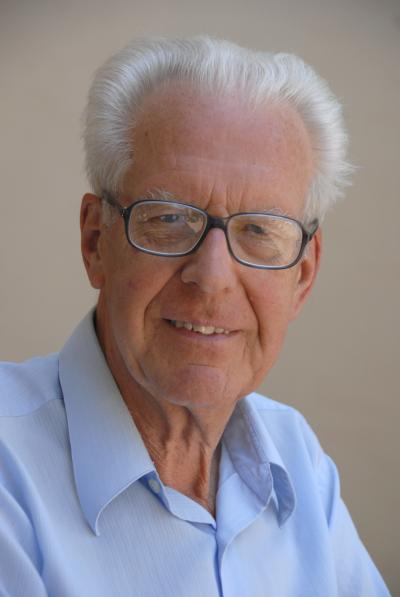Maarten Schmidt: World famous for quasar discovery

Having earned a degree in astronomy in Groningen and a PhD in Leiden, Maarten Schmidt (86) moved to the United States in 1959, to work at the California Institute of Technology. It was there that he made the discovery that made him world famous: the existence of quasi-stellar objects, quasars. Reason aplenty for TIME to dedicate its cover story to him, one the few Dutch people ever to be granted the honour. This was exactly 50 years ago.
Fifty years later, that issue of TIME can still be found on the website of the American magazine. ‘Exploring the Edge of the Universe’ it says on the cover alongside a photo of Schmidt. He discovered small, quasi-stellar objects that were at a huge distance from the earth and emitted an unbelievable amount of light. ‘I was an optical astronomer working with the CalTech 200-inch telescope’, says Schmidt over the telephone from California, where he still lives, having retired about 20 years ago. Radio astronomers gave Schmidt the position of strong radio sources in the sky, and he found out whether he could view and study these objects through his telescope, in visible light.
One of the ‘sound’ sources that Schmidt tried to view in December 1962 bore the name 3C273. ‘When I looked in that position I saw a relatively bright star.’ At the time it was thought that only stars in our own Milky Way could be that bright, but according to the radio astronomers 3C273 was way beyond the Milky Way. Schmidt therefore analysed the spectrum of the star (the individual wavelengths at which it emitted light) to confirm that the light did not come from the radio source.
Astounded
‘But the spectrum made no sense at all. It looked really strange’, Schmidt recalls. When he had to write a short article about 3C273 in early February 1963, he took a good look at the wavelengths. ‘I thought I could see some kind of pattern.’ Then he did something that was actually rather irrational: he looked to see if there was ‘redshift’ in the spectrum, a characteristic of objects that are at a great distance from the earth. Stars in the Milky Way are relatively close and hardly exhibit redshift. ‘But this object did’, says Schmidt. The star proved to be a huge distance away, and emitted the same amount of light as a few dozen billion stars together. ‘We were astounded, and it took a few more years before the theoreticians came up with an explanation.’ This quasi-stellar object, a quasar, proved to be a black hole that attracts matter. As matter disappears in the black hole, a large part of it is converted to light.
Charles de Gaulle
The discovery finally attracted the attention of TIME magazine. ‘They already wanted to write about it, but other things kept coming up. I had to make way for Charles de Gaulle for instance. They finally managed to publish it three years later, in 1966.’ The writers at TIME were unsure about the article, so read the whole thing down the telephone, so that Schmidt could correct any errors. ‘They made a decent job of it.’
Schmidt spent many more years working on quasars. He discovered how many quasars formed in the history of the universe. ‘Most quasars could be found when the universe was three to four billion years old. After that the number decreased. What gives me the greatest satisfaction is that I was able to reveal some of the changes that the universe has undergone, the cosmic evolution.’
Text: René Fransen
Source: Broerstraat 5, the alumni magazine of the University of Groningen
